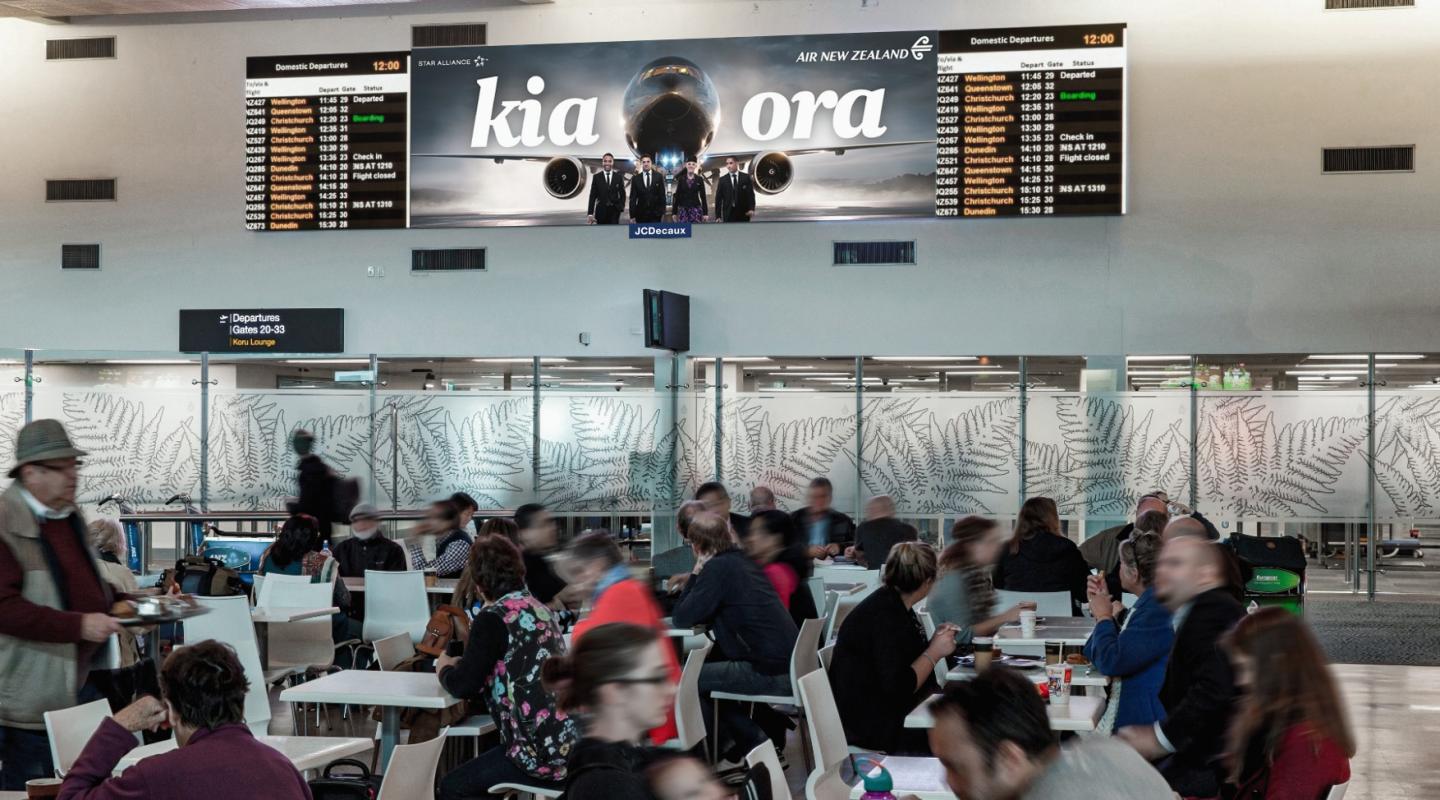
Consumers Are Particularly Receptive To Ads In Airports: Study
March 3, 2023 by Dave Haynes
The New Zealand wing of OOH/DOOH media giant JCDecaux has released a set of insights generated from a neuroscience study that suggests travellers are particularly receptive to advertising in airports because of the “uniqueness of the experience, space and emotional intensity of air travel.”
Conducted late last year by the neuroscience research company Neuro-Insight, the Airport Mindset Study had an aim of trying to “understand the emotional mindset of passengers during a typical airport traveller experience, and measure how JCDecaux AIRPORT touchpoints influence travellers throughout their journey.”
What was learned:
- Airport touchpoints over-deliver memory encoding, building mental availability for brands and driving future consumer behaviour;
- A combination of different airport assets delivers versatility in memory encoding bias reflecting the unique neural-state of the journey;
- Key airport touchpoints produce high emotional intensity which, when taken advantage of, will drive stronger detail and deeper connections for brands;
- Brands that use external Large Format assets create more mental availability and this is likely to enable the subconscious to process the creative within the terminal quicker.
“Emotions run high when you are in an airport – from checking in and clearing security, through to shopping and dining while waiting for your flight,” says Matt Kum, National Sales Manager – Airport, JCDecaux New Zealand. “It’s this heightened emotional intensity that leads to high levels of memory encoding.”
“This is a powerful insight, as memory encoding equals memory storage, which is proven to influence future behaviour. Our brains store information for future use, so in a moment of need, such as when faced with a purchase decision, the brain recalls detail. With 95 percent of decision making driven by the sub-conscious*, media channels that deliver high levels of memory encoding, including airport advertising, present a great opportunity for brands.”
Brian Hill, General Manager, APAC Neuro-Insight, suggests the results are significant for how this influences subsequent consumer behaviour. “The high memory encoding scores tells us that advertising in airport environments create new memory structures, or reinforce existing ones, that build mental availability and drive future consumer behaviour.”
Neuro-Insight says the data suggests “memory encoding” in airports is comparable to that of other media channels. The study observed a unique neuro-state during the airport experience of changing between detailed memory encoding – capturing micro elements such as facts, details, words or price – along with global memory encoding – capturing macro elements such as meaning, connotation and feelings.
“The airport environment is highly effective at driving meaningful connections with brands but is also strong at encoding the key messages within the creative,” adds Victoria Parsons, Senior Insights and Strategy Specialist, JCDecaux New Zealand. “Using creative that has a mixture of imagery, faces and text, will enhance effectiveness of airport advertising as the brain switches between detailed and global memory encoding.
“Brands that are present on high performing Large Format sites on the airport approach will prepare customers’ subconscious to be more receptive to similar creative as they pass through the airport terminals. Investing in multiple airport Out-of-Home sites can help to encode many different aspects of the creative to support both a long-term meaningful connection with a brand, or to encode a more detailed short-term activation. Large Format external airport sites also reach drop-off and pickup audiences as well as those travelling through the precinct, with impactful communications.”



Very nice of them to share!
Agreed. Good info. Great share